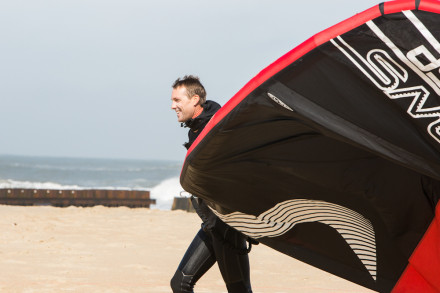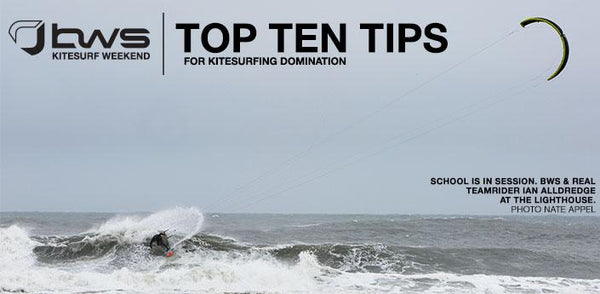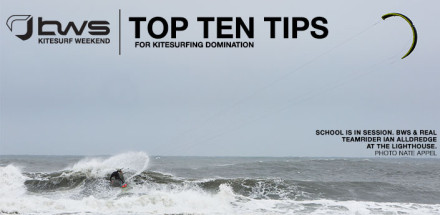
This past weekend we were lucky enough to have Ben Wilson and the BWS pro team here for the weekend to take sessions and run a kite surf camp. Here are 10 takeaways worth sharing with you:
1. What Down The Line Drift Actually Means
With side/side-on/side-off conditions, when you ride the wave towards your kite you want it to drift with you. You will have heard the phrase good drift before but what does that actually mean?
According to Ben Wilson, it’s all about the kite sitting in the same position as you ride towards it and not moving back (backstall towards the trailing edge) or forwards (fly forwards out of the wind window). If your kite starts to move forwards or backwards instead of drifting then it becomes hard to steer the kite and ruins your wave!
Ben and his team have identified down the line drift as the number 1 thing a wave kite needs to do and this focus means that the Noise Pro drifts better than anything else out there.
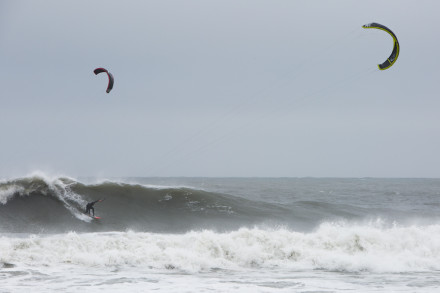
2. If you enjoy riding waves, pick a kite surf board that was designed and built by a surfboard shaper.
It may seem simple to design a surfboard but you’d be surprised – there are hundreds of subtleties that go into every shape and these make a big difference. Over the years, surfboard shapers have perfected these subtleties and know how to build boards that are really fun to surf (or kite surf).
If you are focused on surfing waves with your kite, Ben strongly recommends choosing a board that has been designed and built by a surfboard shaper.
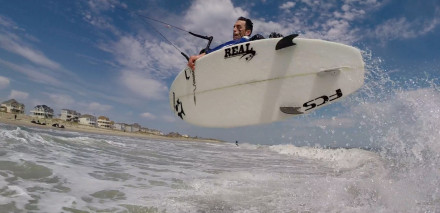
3. Why Ian Alldredge always rides a bigger kite than everyone else on the water.
The BWS Noise Pro has plenty of depower so Ian prefers to ride a bigger kite and take advantage of the extra power. He doesn’t like having to work his kite in the waves and wants to make sure that he can always get himself out of a sticky situation if he needs to. When he’s at the beach, he’s always riding a kite 2m bigger than everyone else!
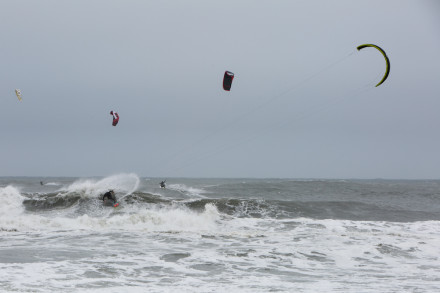
4. The best shape for your first board is a hybrid.
To bring surfboard design down to its simplest form, you have high performance shortboards at one end (thin, narrow, pointy) and “fish” boards at the other end (wide, thick and curvy). Sitting somewhere in the middle are hybrids, which often make the best kite surf boards.
Particularly if you normally ride a twin tip, choosing a “hybrid” design for your first board will help you strike the balance needed to maximize your fun on the water. Boards like the BWS Drifter are a great example of these Hybrid Designs.
5. The lighthouse is a really fun kite surf spot (especially when its big)?
The BWS kite team travel all over the world riding some of the best waves available so it was awesome to see how fired up they were after their session at the East Coast’s most famous surf spot. With solid wind and waves, the boys settled in to lighting it up and the smiles at the end of the day told the story!
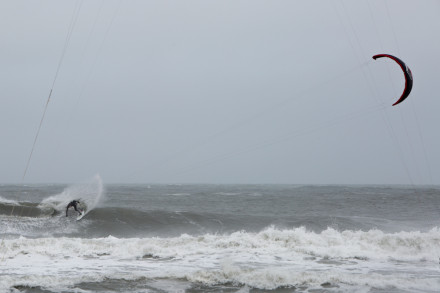
6. Always turn your kite before you turn your board.
Throughout the weekend, Ben and his team were running a wave camp for some very lucky kiters. The number one tip that Ben gave from the coaching weekend is to always turn your kite before you turn your board. Focus on remembering that next time you ride and it will make the world of difference!
7. Most of the BWS team were riding some form of sliding spreader bar.
This one is self explanatory…! We recommend the Dakine Pyromaniac…
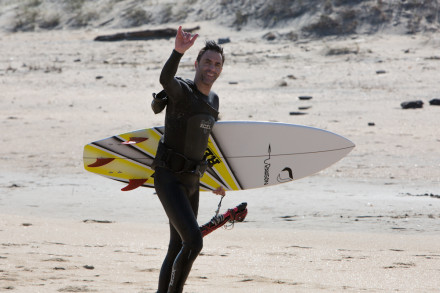
8. Having the right gear for riding in the waves is 50% about the board and 50% about the kite.
This was a really interesting lesson we learnt from Ben Wilson. Most people assume that any old board will work and it’s all about the kite (or vice versa). In reality, Ben says that it really is 50/50… certainly food for thought as you continue working to build your ultimate quiver.
9. Look after your surfboard.
If you’ve come from a twin tip background, you may not be familiar with surfboard best practice… Use a board bag, don’t leave out in the sun and look after it! You will be amazed how much longer it will last.
10. The difference between good and great in the waves is kitesurfing with speed.
Watching Ben Wilson, Ian Alldredge and the rest of the team kite surf at the lighthouse taught us the importance of riding with speed.
All of them are able to use the wave to generate speed so even if they are cruising slowly to catch the wave, once they have caught it they are surfing 50% faster than anyone else on the water. This allows them to go more vertical, do bigger turns and have more fun.
